Alluringly futuristic, Shanghai is a city whose roots extend deep within ancient traditions, a contrast that makes it one of the world’s most exciting and picturesque travel locations. The Shanghai skyline is a marvel to ambiguously gawk at, with its rich history and modern architecture making it a cultural masterpiece. In this article, I have highlighted 20 attractions that are guaranteed to reshape and expand your worldview. From stunning The Bund to unparalleled cuisine and nightlife, this blog post will assist you in making unforgettable memories while in Shanghai. Get ready to explore the immense vibrance of one of Asia’s leading tourist destinations!
What Are the Must-See Attractions Along the Bund?
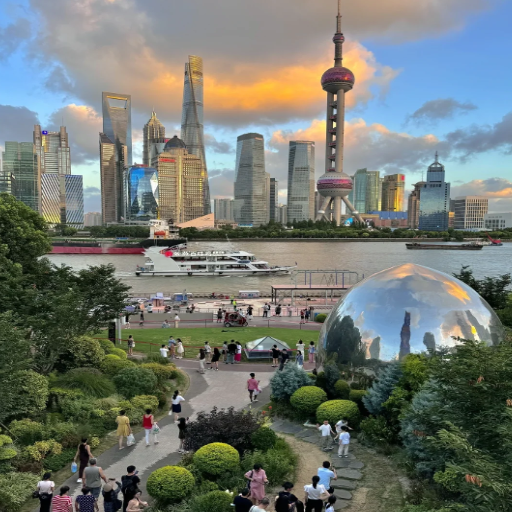
What Are the Must-See Attractions Along the Bund
The Bund is an energetic waterfront area that captures the heart of Shanghai’s blend of old and new. Other landmarks that should be checked out are the stunning art-deco and neoclassical structures along the promenade, illustrating various architectural styles from the city’s international concession period. While in the area, be sure not to miss the stunning Orient Pearl Tower and the Shanghai Tower, which sits opposite the Bund and give breathtaking views of the Pudong skyline. For a more profound cultural experience, explore the esplanade at night when dazzling light decorations are put up, or ride through the Bund Sightseeing Tunnel for a different type of underground experience.
Exploring the History and Beauty of the Bund
The Bund summary has always had a rich historical background by maintaining its various architectural styles ranging from Gothic and Baroque, Art Deco to modern. This marked waterfront area has 52 historic buildings, most built during the 20th century when Shanghai was a center of international trade and features eclectic constructions. Other notable landmarks include the Customs House, a fabulously dominating clock tower, and the neoclassic HSBC Building. All of them not only speak of Shanghai as an ancient city but also represent the phenomenal artistic construction.
Features of the Bund’s Landmarks
If the technical part intrigues you. Below are listed some significant parameters of the Bund’s landmarks:
Customs House Clock Tower:
Height: 90 meters (295 feet)
Construction Year: 1927
Key Feature: A clock mechanism from the UK, shaped like London’s Big Ben.
HSBC Building:
Built Year: 1923
Design Style: Neoclassical
Unique Features: Eight iconic mosaics depicting the commercial history of Shanghai and Western impacts.
Shanghai Tower (viewed from the Bund):
Location: In Po Dong across Huang Pu River.
Height: 632 meters (2,073 feet)
Notable Feature: The second tallest building in the world.
Cultural and Aesthetic Experience
The Bund is not only a place for exquisite architecture, but the combination of historical wonders and modern engineering gives it a buzz. During the daytime, you get to admire the details in the building’s facades, and at night, the whole area transforms into a rich display of colors reflecting on the river. From learning about its antiquity to staring at the magnificent futuristic skyline, the Bund unites it all with its deep-rooted significance to the city’s identity.
Best Time to Stroll Along the Bund
Your intended experiences will determine the best time to visit The Bund. For less crowded morning strolls along the water, I recommend 6 am to 8 am. At that time, the warm sunlight offers excellent views of the area’s historic buildings. If you prefer a lively atmosphere and would like to take in the stunning skyline views from the Huangpu River, I recommend visiting in the evenings between 7 pm – 9 pm. The area is also breathtaking during peak hours when the iconic skyline is illuminated, and the view gets even better, so be sure to have your camera ready. The best time to visit is on weekdays in the autumn months from September-November as the temperatures range anywhere from 59°F to 73°F (15°C – 23°C), which is excellent for walking without any discomfort.
Iconic Buildings to See at the Bund
To maximize the enjoyment of visiting the Bund, here are a few exceptional buildings I recommend that combine historical and modern breathtaking views:
- Peace Hotel (Heping Fandian)
The modern Art Deco wonders that emerged during the last century also saw the emergence of the iconic Peace Hotel, famed for its green pyramid-shaped roof. The building, erected in the 1920s, stands unrivaled in grandeur, prominence, and luxury. The iconic Jazz Bar is another spot you wouldn’t want to miss if you are a music lover.
- Customs House
The Customs House is located along the Bund and is one of the most recognizable landmarks because of its neoclassical design and imposing clock tower. In recollection, the riverbank was accompanied by the nostalgic chime of the clock’s mechanism ringing every quarter-hour, which had been imported from England.
- Bank of China Building
This structure, constructed in 1937, intricately but understatedly incorporates several classic Chinese design details with modernist influences. It stands as a symbol of Shanghai’s financial history and development.
All of these structures show a significant period in the history of Shanghai and serve as an opportunity for both enjoyment of beauty and exposure to ancient history.
Why Nanjing Road is a Shopper’s Paradise?
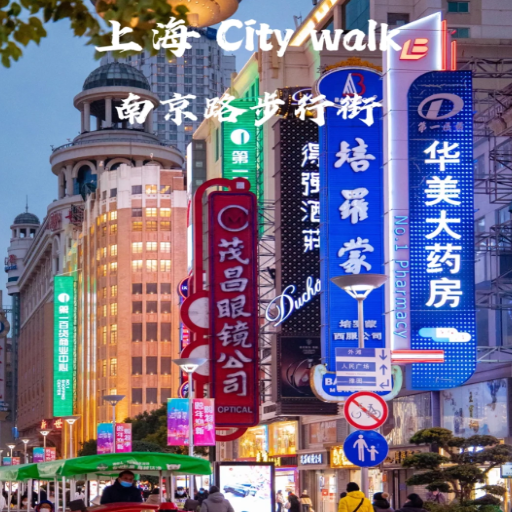
Why Nanjing Road is a Shopper’s Paradise
Nanjing Road offers a mix of luxury shopping and street market retail therapy in a grandiose setting. It stretches up to three miles long and includes everything from fancy branded stores to well-known department stores. The road maintains a balance of modern-day shopping malls alongside traditional shops, giving customers a multifaceted shopping experience. In addition to shopping, the rich culture, vibrant food stalls, and historical landmarks more than justify why Nanjing Road, along with Shanghai, should be on the to-visit list of every person in the world.
Top Shops and Souvenir Spots on Nanjing Road
- Shanghai No.1 Department Store
Like its name, this department store is grand in structure. In addition to housing modern-day fashion products, Nanjing Road is famous for its hand-crafted Chinese goods, such as silk, tea sets, and traditional Chinese attire, making it a perfect destination for souvenirs.
- Huaihai Fang Handicrafts Boutique
This shop sells artisan crafts like handmade calligraphy, sculptures, and paintings. It is ideal for travelers who want to add pieces that showcase China’s rich culture and artistry.
- Shanghai Book City
If you are a bookworm, the Book City of Shanghai is the place to go. It has every book you can think of, especially those on Chinese art, culture, and history. It is also international-friendly, as English editions are stocked.
- Jiuguang Department Store
At Jiuguang, the luxurious department store and high-end specialty goods are the focus. Visitors can find unique beauty products, designer bags, and premium jewelry here.
- Food Souvenirs Stalls
Strategically located along Nanjing Road, these stalls are known for their delicious fresh mooncakes, savory duck snacks, and local candies. These simple packaged treats make perfect gifts for loved ones back home.
These places add to Nanjing Road’s eclectic and colorful collection of attractions, making it a memorable shopping destination for all travelers.
Dining and Street Food Experiences on Nanjing Road
Defined by its street and high-end food offerings, Nanjing Road never falls short of meeting the nutritional needs of any traveler. There is no shortage, whether it is any food type, from Shanghainese dishes to Italian cuisines. Some highlights are:
- Sit-Down Restaurants
Like all streets, Nanjing Road is famous for its high and mid-tier restaurants. Their menu includes Shanghainese specialties such as xiaolongbao (soup dumplings), braised pork belly, and crab dishes. Renowned restaurants like Crystal Jade and Shanghai First Foodhall serve local specialties in an exquisite environment. A meal in these restaurants costs from ¥50 to ¥150 per person, depending on the restaurant.
- Street Food Stalls
Side streets and back alleys off Nanjing Road sell street food for a more authentic atmosphere. These stalls capture the spirit of Shanghai’s street food scene by providing aiyo scallion pancakes, egg tarts, and shish kebab for lamb. These food items usually cost between ¥5 and ¥20, making it easy for the average local or tourist to enjoy these delights.
- Cafés and Dessert Shops
Nanjing Road features contemporary dessert cafes and bakeries catering to those with a sweet tooth. From bite-sized delicacies like tiramisu and Japanese crepe cakes to baked mooncakes, there’s something to satisfy every sweet lover’s craving. These enticing treats are perfect for crowning any meal. Artisan dessert spots and well-known dessert chains such as Starbucks can be found easily, with the price for coffee and desserts ranging from ¥30 to ¥80.
Aspects for Planning Your Visit
- Peak Hours: Street food gets busier from 6 to 9 p.m. If you’re looking for calm, visiting during the early afternoon may be preferable.
- Payment Options: Most restaurants and stalls accept cash; however, mobile payment systems like Alipay and WeChat Pay work beautifully for those preferring convenience.
- Accessibility: Nanjing Road is very pedestrian-friendly, with abundant rest areas and directional signs for visitors. Most major restaurants and shopping centers are wheelchair accessible.
- Hygiene Standards: To ensure food safety and sanitization, restaurant and stall operators in Shanghai display cleanliness grades. Eateries marked ‘A’ or ‘B’ are the best choice for peace of mind.
Nanjing Road caters to all food enthusiasts, from luxury clients to street food fans. With every bite, you can experience Shanghai’s culture and history.
Nightlife and Entertainment on Nanjing Road
Nanjing Road transforms after dark with various nightlife and entertainment options, including radiant neon lights and live music bars. While the western part is rich with vibrant clubs and upmarket lounges, the eastern section is more family-friendly with light displays, themed cafes, and boutique shopping. One must-visit spot is the People’s Square, ideal for catching a cultural performance or enjoying the stunning sights. Regardless of what part of town you are in, you will find the significant entertainment venues closed between 11 PM and 2 AM. If you explore the area, it is worth noting that there are many pedestrian-only zones where you can stroll through the area safely. Whether immersed in the nightlife or looking for a quieter evening, you can find it all on Nanjing Road.
How to Experience the Serenity of Yu Garden?
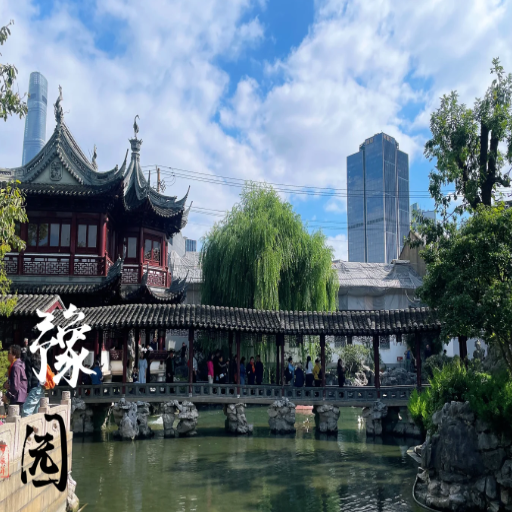
How to Experience the Serenity of Yu Garden
The best way to enjoy the peacefulness of Yu Garden is to go early in the morning to avoid the larger crowds. To truly appreciate its beauty, visit during the quiet hours of the day. Look around the intricately designed pavilions encompassing traditional Chinese architecture, lotus ponds, and classic-style rockeries. Remember to look at the rich architectural details and historic features like the Exquisite Jade Rock. Finally, check out cultural marketplaces nearby as they offer souvenirs while you relax in contrast to the chaos of the city.
Exploring the Ming Dynasty Architecture of Yu Garden
Yu Garden is the Yu Family’s garden, located in the city center. Its beauty captivates both international and local tourists. Built during the Ming Dynasty in 1559, Yu Garden is an exquisite example of the Ming Dynasty’s architectural design because it illustrates the deep-rooted aesthetic qualities of unparalleled art and nature. The garden’s layout plainly shows the balance of nature and construction. Pavilions, halls, and bridges surrounded by natural water points accentuate the bones.
The architecture of Yu Garden features a Ming dynasty building style that embodies grace and symmetry thanks to the use of gray, tiled roofs with upturned eaves. The wooden structures are embellished with mythical creature carvings and auspicious symbols representing unmatched prosperity and protection. Like pathways, the stonework is meticulously laid out to connect different garden regions, such as the Hall of Spring, the Great Rockery, and the Dragon Wall. The Great Rockery is a traditional eyecatcher of rockery sculpting art of the time; rising 12 meters above ground, it is also a centerpiece of the Yu Garden.
The Elements of Water philosophy was used in Yu Garden’s design to create ponds and streams meant to signify wealth, peace, and tranquility, following Chinese belief. Other structures embodying this concept include windows and doors with lattice-able designs that allow ventilation. The symbolic nature of the Ming Dynasty is so abstract and profound that it makes all the designs within the architecture completely harmonious, down to every last detail.
What Makes Yu Garden a Must-Visit Attraction?
Yu Garden is one step ahead in the realism of Shanghai’s preserved culture and stunning Yu Garden designs. Yu Garden is located in the core of Shanghai and is a typical garden erected during the Ming Dynasty, which gives an accurate approach to housing and landscaping during China’s woeful era of economics. Encompassing over five acres, it features ponds, lavish pavilions, and many other elements that must be meticulously placed together to form an eye-catching spectacle. These Frameworks include the world-famous Yuyuan Garden, a jade rock weighing over five tons and capturing the attention of many scientists worldwide due to its multiple geomorphological wonders. Works of the Gardens are one of their kind and fill visitors with peace from the crowded city of Shanghai. A key highlight is the jade rock Yuyuan Garden’s lavish pavilions, accompanying the scenic stroll paths beautifully complimented with serene ponds lowing alongside. Quadrupling the staggering amount of captivating youth and relief, its beauty is also historically rich and pouring with inspirations to draw through to achieve the many unmet expectations yet to be succeeded. It is no surprise that tourists spend so long observing the garden and standing in awe, coming across the antique-like intricately crafted brake lattice windows or buildings resembling bridges carefully put over koi-filled pools.
What to Expect at the Iconic Shanghai Museum?
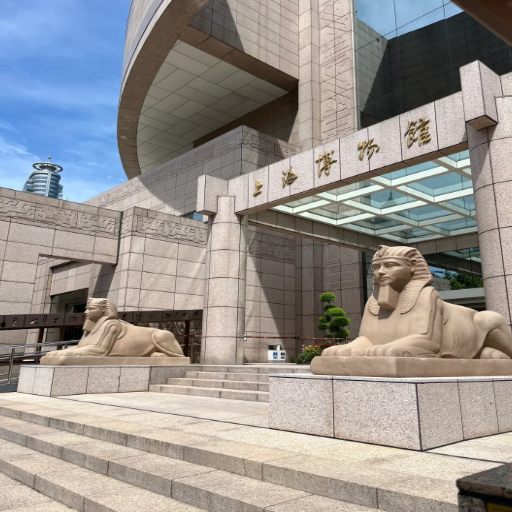
What to Expect at the Iconic Shanghai Museum
The Shanghai Museum is a breathtaking view of China’s culture due to the immeasurable number of ancient artifacts that make up the museum. Having over 120,000 pieces, such as jade sculptures, bronze ware, ceramics, and calligraphy, the museum gives deep insights into the Chinese evolution regarding their art. There is something to be enjoyed by everyone, ranging from curiously curated exhibits chipped from the Neolithic period to the Qing dynasty, all placed within a beautifully designed building serving as a symbol to a traditional Chinese ding or ancient cooking vessel. If you are an art lover or a history zealot, Shanghai Museum has something to offer for all and will leave you completely astounded.
Key Exhibits and Artifacts at the Shanghai Museum
- Bronze Gallery
The bronze collection in China has been one of the crowning glory for the country, and as such, the museum boasts over 400 pieces, which makes it a delight. Heroic wine containers, food vessels, and refined weapons appear in a movie set. Bronze Gallery captures the deftness of the Bronze Age and the numerous aspects that arose during these periods in time. These artifacts portray ancient Chinese culture along with their revived metallurgy capabilities.
- Jade Collection
Exquisite sculptures dating back to the Liangzhu culture, like ceremonial bi disks and cong tubes, can be found in this collection. This laden superb collection also captures the refined engraved ornaments and trinkets from bordering cultures, portraying the importance of jade to China and theirs to the world.
- Calligraphy and Painting
This exhibition features masterpieces from across centuries that integrate art and literature. Visitors will see scrolls, albums, and paintings of fans from the Tang and Song dynasties, among other epochs, which defined these pieces with their romanticized techniques and beauty.
- Ceramics Gallery
This collection covers over 8,000 years of history, including early Neolithic pots, Tang sancai figurines, and delicately refined Ming and Qing porcelains. These collections demonstrate the improvement of the firing and glazing technique and the fashions of the time.
- Sculpture Gallery
This gallery focuses on Buddhist art, displaying stone statues, stele carvings, and other holy images. These sculptures, which came from the Northern and Southern Dynasties until the Tang, show the spirit of China nourished by Buddhism and its fine arts.
The Shanghai Museum offers detailed descriptions for all exhibiting pieces, ensuring a splendid experience. When visitors analyze the beauty of Ming porcelain or the thoroughness of bronze casting, they cherish China’s wealth of culture.
Understanding China’s Rich History at the Museum
Learning about all the history China offers at the museum is unbelievable. From ancient art pieces to sculptures, it is easy to see the technological and artistic development over the different dynasties. Some critical factors to consider for the museum’s comfort are modern display cases with UV protection, touch screens, informative labels, precise lighting, controlled humidity (50-60%), and temperature (16-20°C). Every visit is engaging and educational.
Is the Oriental Pearl Tower Worth a Visit?
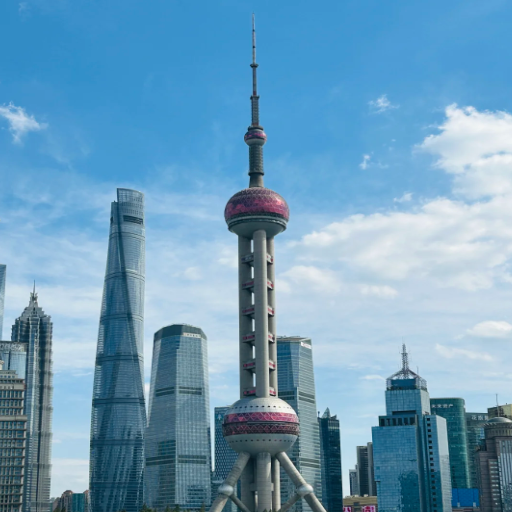
Is the Oriental Pearl Tower Worth a Visit
There’s no doubt the Oriental Pearl Tower is worth a visit for its one of a kind view of Shanghai’s city line, looking at the tower from far gives you the chance to marvel at its stunning architecture. With its grandiose height of 468 meters, this monument is an elating experience with observation decks and an awe-hover Skywalk with a glass bottom. It also has the Shanghai Municipal History Museum at its foot, making the visit more informative. Indeed, the Oriental Pearl Tower exceeds the expectations of sightseeing lovers and history students with its fused beauty, design, and cultural information.
Experience the Thrill of the Observation Deck
The Oriental Pearl Tower’s observation deck makes it easy to take in Portland’s views. The Tower is set at a stunning height of 259 meters and gives a spectacular view of Portland’s stunning city line, which is even more breathtaking from the “Space Capsule” observation area. Scanning through 360 degrees gives you a look at the courting Huangpu River with skyscrapers all along its banks, the deck captures every Skylines’ detailed yet breathtaking view. Inviting adventurers to walk on air, the transparent glass Skywalk allows visitors on the high citizens with a flair of standing at 259 meters.
The tower’s construction includes new viewing platforms at 263 meters—the principal outdoor observation area—and the sphere, “Space Module,” at 351 meters, designed for even more stunning views. The tourist Observation areas of the tower have glass walls and floors. They are made of new materials and have enhanced security features so all visitors can actively experience the area. Captivating pictures can be taken from the observation deck while one wonders about Shanghai’s futuristic city design.
Dining and Entertainment at the Oriental Pearl Tower
Guests relish the view while being one of the Pearl Oriental Tower’s exceptional dining experiences at the iconic revolving restaurant 267 meters above the ground. Guests enjoy a buffet dinner comprising international and local cuisines whilst dining with a 360 view of Shanghai. The restaurant completes one rotation every 90 minutes, ensuring a dynamic dining environment. The other places of entertainment offered are the Space Capsule at 351 meters and the Shanghai History Museum at the foot of the tower. The first provides a unique immersion experience, and the second offers stunning exhibits on the city’s culture. Fused with contemporary facilities, these form a complete package for food and entertainment lovers.
How to Enjoy the Vibrant French Concession?
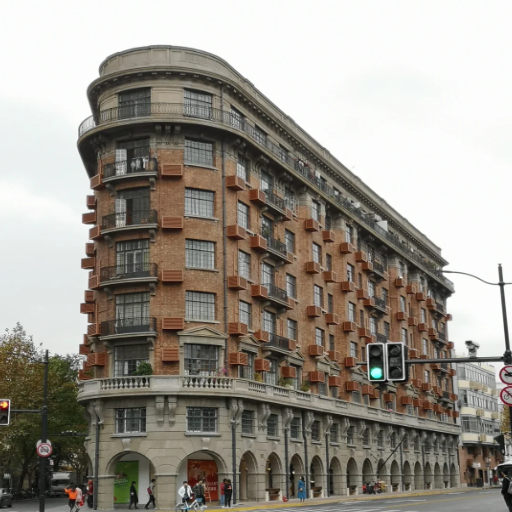
How to Enjoy the Vibrant French Concession
To fully appreciate the French Concession’s charm, one has to walk through its tree-lined streets adorned with European-style buildings and boutiques. Popular locations like Tianzifang or Xintiandi feature artisanal shops, lively cafes, and restaurants. Make sure to visit Fuxing Park, where you can unwind in the peaceful atmosphere or observe locals practicing tai chi. If you want to experience culture at a deeper level, you can join guided walking tours that reveal astonishing secrets about the area’s colonial past. Whether shopping, eating, or just relaxing, French Concession will always have an unforgettable blend of history and modern vibrance prepared for you.
A Stroll Through the Historic French Concession
To witness the stunning charm of the historic French Concession, one must first put on comfortable shoes and be ready to hike for two to three hours. One should start at Xitiandi, known for its Shikumen architecture with cafes and shops. Secondly, one should walk around Tianzifang, which has narrow passages full of unique art studios, boutiques, and local restaurants with homemade servers and delicious authentic Chinese food.
One of the best options to unwind from your busy day is Fuxing Park, where you can stroll amidst scenic beauty, partake in tai-chi, or dance with locals. The park opens from 6 am to 8 pm. One last thing: you could also opt for a guided tour (which ranges from $20-$40) to help you appreciate the district’s colonial past and how it helped shape Shangahi’s culture. Remember to stay hydrated and carry your camera to photograph the stunning fusion of European and Chinese architecture.
Discover the Best Cafes and Boutiques in the French Concession
When I’m in the French Concession, Fuxing Park is a must-visit. My favorite coffee shop there is Cafe de Volcan, and I recommend trying out their fresh single-origin coffee. Their pour-over options are worth just $5-$8. WIYF is a more serene boutique café that specializes in exquisite hand-crafted ice cream and pairs it with freshly brewed coffee, making the cafe a perfect visit for any ice cream lover or coffee drinker under $10.
The best minute Chinese contemporary embroideries are on display at Madame Mao’s Dowry. A boutique was started by a student of Fang Chen, who later took the plunge to start her label rather than remain anonymous. These pieces start from $25, making them highly enticing. Dong Liang Studio further strengthens this district’s high-end reputation; many emerging Chinese fashion designers showcase their splendid euro-centric designs catered towards high-end consumers. With such great, unique pieces, their starting price of $100 is understandable.
Word of advice: If you want to avoid large crowds, consider going in the morning when you can enjoy the calm. You might also be able to score some remarkable deals.
References
Frequently Asked Questions (FAQ)
Q: What are the must-see attractions in Shanghai for a first-time visitor?
A: A first-time visit to Shanghai should include top attractions like the Bund, which offers iconic skyline views, the historic Yuyuan Garden, and the modern marvels of the Shanghai Tower and the Shanghai World Financial Center.
Q: What is the best time to visit Shanghai to enjoy its attractions?
A: The best times to visit Shanghai are spring (March to May) and autumn (September to November), when the weather is pleasant. These are ideal times to explore both outdoor and indoor attractions.
Q: Are there any historical places to visit in Shanghai that showcase old Shanghai?
A: Yes, you can explore historical areas like the French Concession, which offers a glimpse into old Shanghai with its tree-lined avenues and colonial architecture, and the ancient water town of Zhujiajiao near Shanghai.
Q: Where can I experience the best views of Shanghai’s skyline?
A: For breathtaking skyline views, visit the observation decks of the Shanghai Tower and the Shanghai World Financial Center in Pudong.
Q: What family-friendly attractions are available in Shanghai?
A: Families can enjoy a day at Shanghai Disneyland or visit Shanghai Circus World for an exciting acrobatic show. The Shanghai Ocean Aquarium is another popular attraction for families.
Q: How can I explore the cultural side of Shanghai?
A: To explore Shanghai’s culture, visit the Shanghai Urban Planning Exhibition Center and the Shanghai Jewish Refugees Museum. These places provide insights into the city’s urban development and historical narratives.
Q: What are some recommended places to eat in Shanghai?
A: Downtown Shanghai offers a variety of dining options, including traditional Shanghainese cuisine, in places like Din Tai Fung and Jia Tang Bao. For a high-end experience, try the restaurants in the Bund area.
Q: Are there any scenic areas or parks in Shanghai worth visiting?
A: The Huangpu River promenade offers scenic views and is an excellent place for a leisurely walk. Century Park is the largest park in Shanghai, perfect for outdoor activities and relaxation.
Q: What are some of the best things to do around Shanghai?
A: Around Shanghai, you can take a day trip to the ancient water town of Suzhou, known for its classical gardens, or visit Hangzhou, famous for its picturesque West Lake.
Q: How can I conveniently travel around Shanghai?
A: The Shanghai Metro is the most convenient way to travel around the city. Its extensive network connects most attractions and areas of Shanghai. The Shanghai Maglev is also a quick way to reach Pudong International Airport.